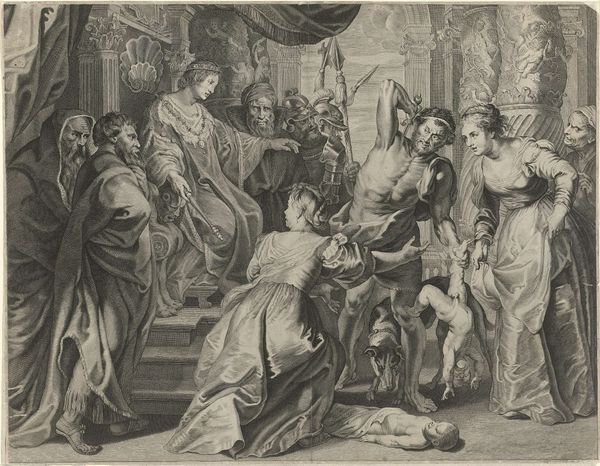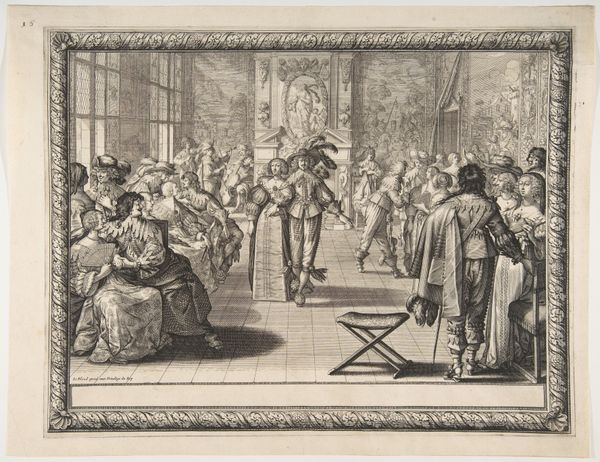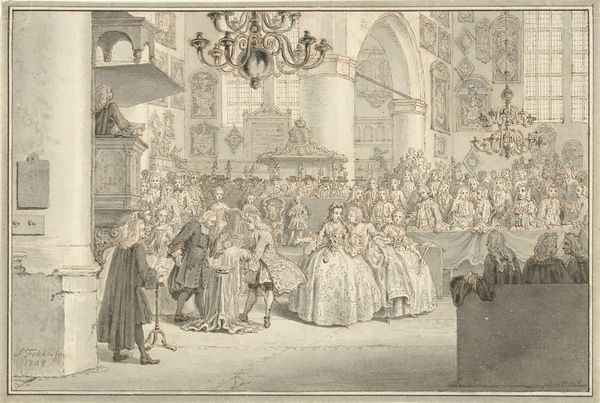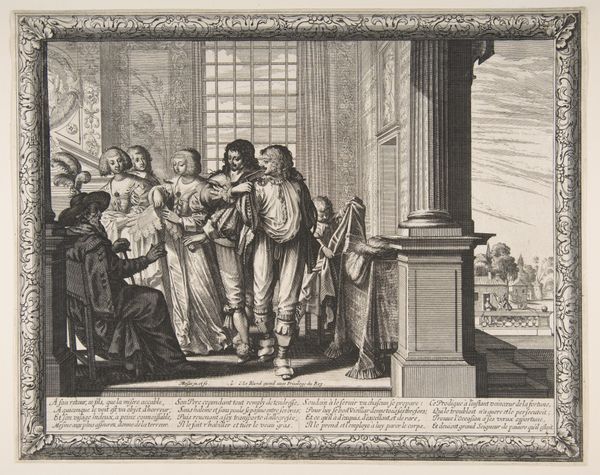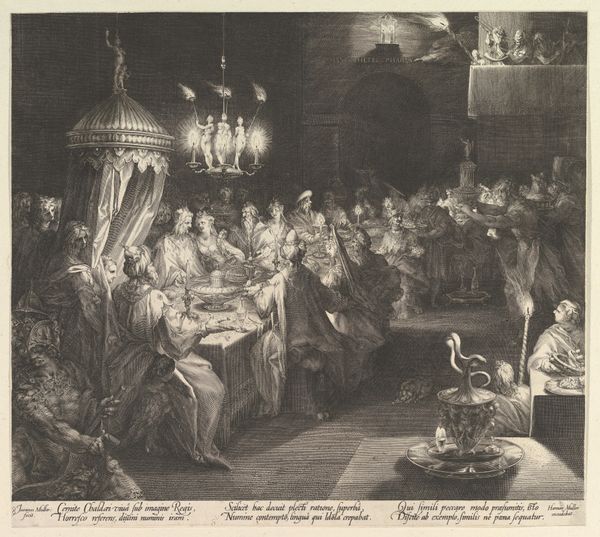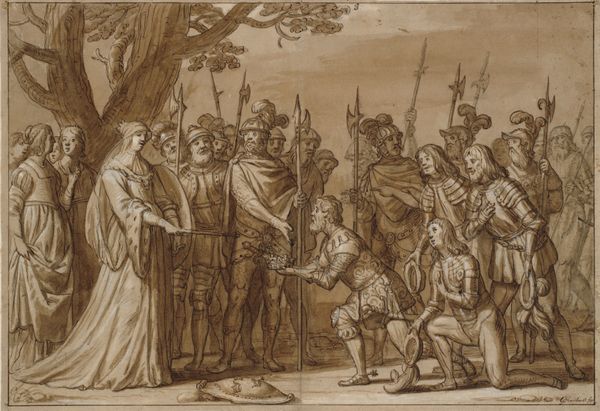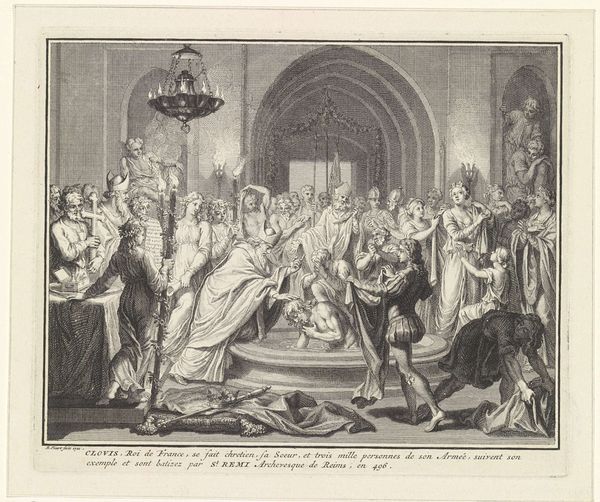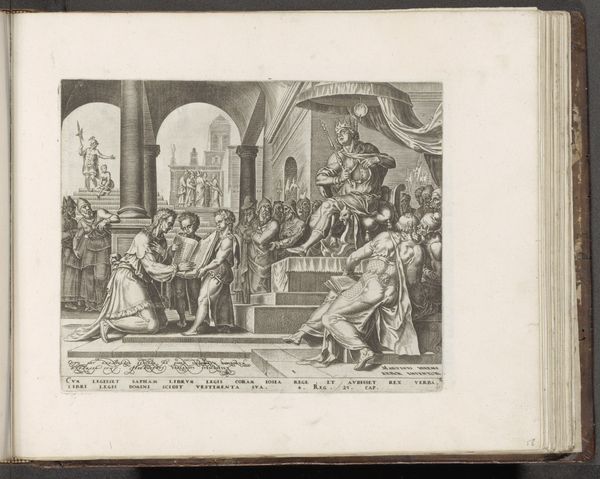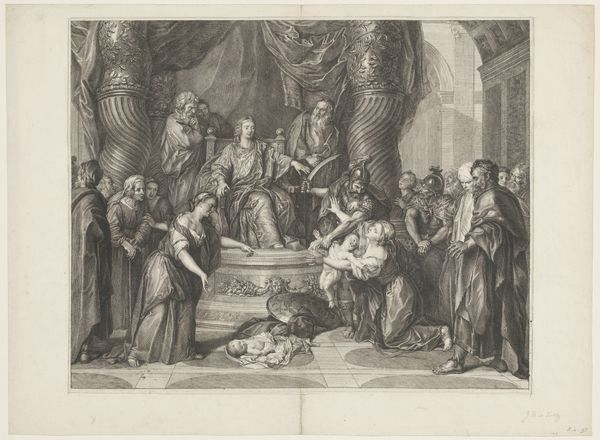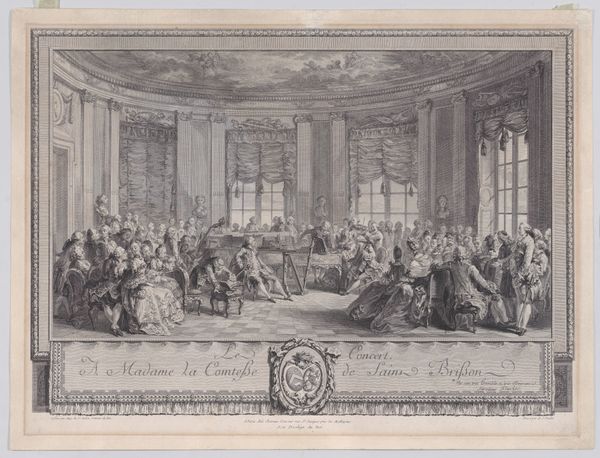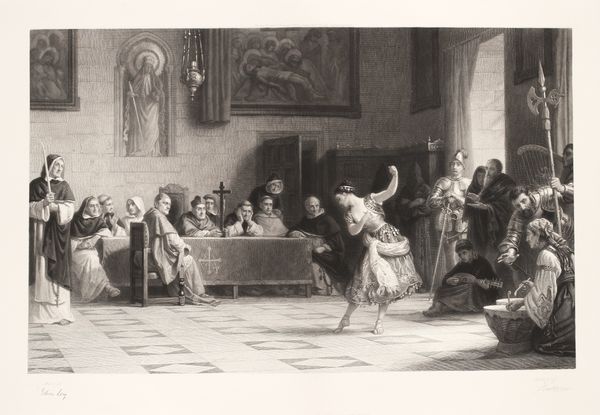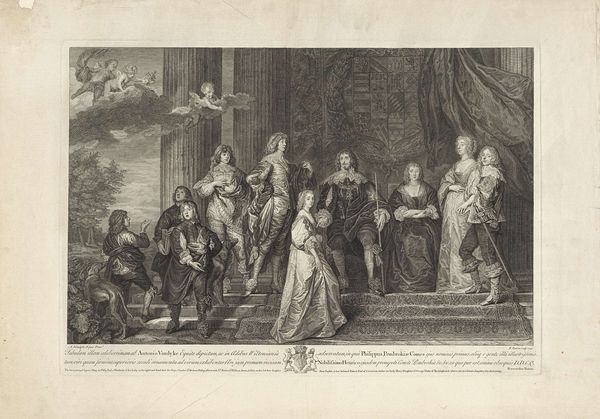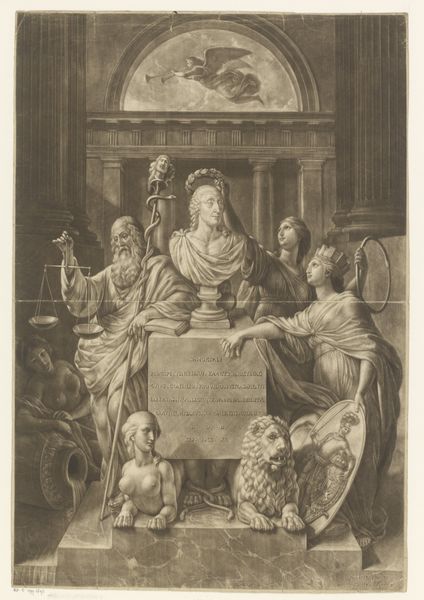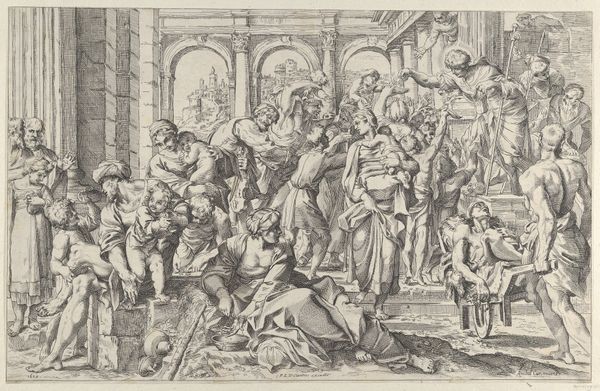
Louis XIV in Notre-Dame de Paris on January 30, 1687 at a Thanksgiving Service after his Recovery from a Grave Illness 1705 - 1720
0:00
0:00
drawing, painting, print, oil-paint
#
portrait
#
drawing
#
baroque
#
painting
# print
#
oil-paint
#
naive art
#
history-painting
#
academic-art
#
portrait art
Dimensions: 16 15/16 x 29 13/16 in. (43 x 75.8 cm)
Copyright: Public Domain
Editor: This painting by Guy Louis Vernansal the Elder, dating from 1705-1720, is titled *Louis XIV in Notre-Dame de Paris on January 30, 1687 at a Thanksgiving Service after his Recovery from a Grave Illness.* It's striking how staged and deliberately performative the entire scene appears. How might we interpret this theatrical display? Curator: Exactly. It's crucial to recognize how paintings like this served as powerful instruments of state propaganda. Consider the setting, Notre-Dame; a deliberate choice intended to associate the monarchy with divine blessing and emphasize its historical legitimacy through both the architecture and the ceremony. Why do you think the artist includes so many figures? Editor: It gives a sense of the scale of the event, but it also feels like everyone who is anyone is meant to be seen there, witnessing this…divine event. Almost like their presence legitimizes it. Curator: Precisely. Inclusion in such a portrait affirmed the social standing and political allegiances of the court. The painting immortalizes this constructed image of royal authority, but do you think that images of powerful individuals risk a backlash? Editor: Yes, for example, portraying Louis XIV as frail, rather than resilient, might suggest vulnerability or invite challenges to his reign. In contrast, portraying an image of unbreakable authority could incite resentment from ordinary individuals suffering injustices in daily life. Curator: Exactly. Furthermore, the painting isn't merely documenting history, it’s actively crafting it for future consumption, dictating how Louis XIV wished to be remembered. It served as a visual contract. Do you think that history painting still fulfill this function today? Editor: That’s fascinating! I hadn’t considered how explicitly art could function as propaganda. Thanks for expanding my view. Curator: It is key to understanding both art and society during the era. It helps remind us of art's public roles.
Comments
No comments
Be the first to comment and join the conversation on the ultimate creative platform.
